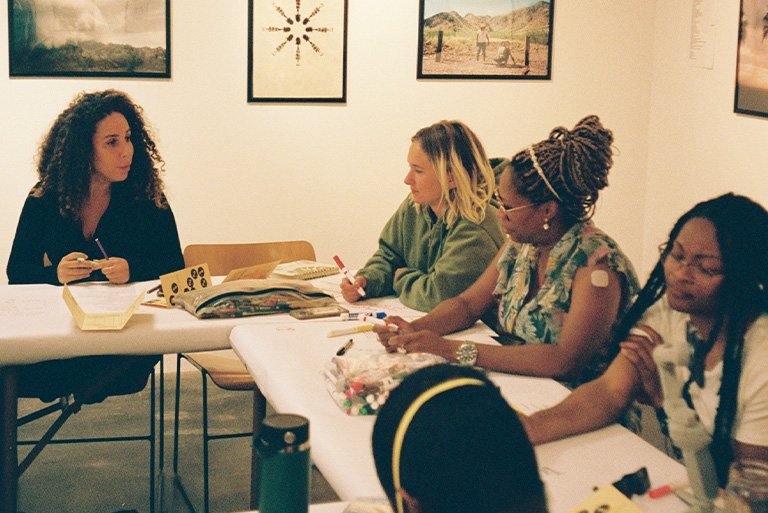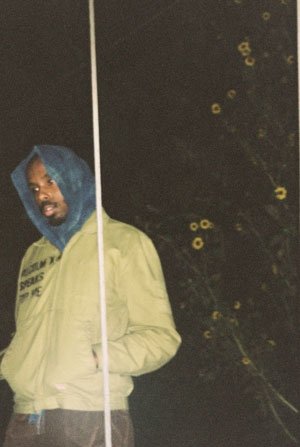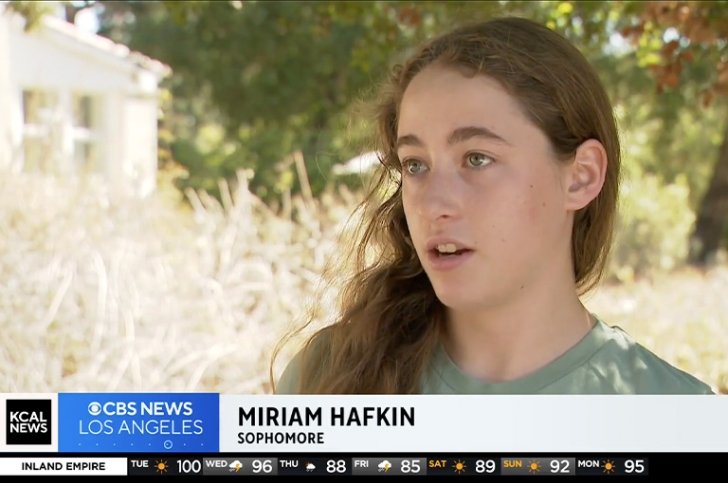Marvin James: Exploring History and Community as an Activist-Artist
Marvin James shared with students his practice in contemporary archiving, community-based knowledge, and the scientific method as Pitzer’s 2024–25 activist-artist-in-residence.

For artist Marvin James, archives are not dusty files in storage rooms. They are bursts of blue on sun-printed fabrics, music playlists, visual essays, and even neighborhood fliers. More than black-and-white photographs, archives are living community spaces for dialogue and creativity. In the 2024–25 academic year, Marvin brought his philosophy of people-powered knowledge to his role as Pitzer College’s activist-artist-in-residence.
The Pitzer Community Engagement Center (CEC) and Pitzer College Art Galleries invite one local activist-artist per academic year to promote interdisciplinary exchange with students. Born and raised in nearby Pomona, Calif., Marvin brought a multifaceted understanding of art and social engagement to this role.
“We’re living through history actively,” said Marvin. “The reason for engaging in archiving and histories is rooted in trying to figure it out in community.”
Archiving with community and creativity

Marvin draws together the past and present to address ongoing social issues. He is the founding archive caretaker for ITS-IN-SCOPE, a collective learning and contemporary archiving practice.
In his view, contemporary archiving involves two essentials: community building and the scientific method. He talks to communities about their needs and studies historical approaches to develop his theories of changemaking. Then he tests his hypotheses to make creative work, places, or experiences to meet people’s needs.
One example is Memoryhaus 555. After the stay-at-home orders of the COVID pandemic lifted, arts organizers and community members wanted a space to gather safely, intimately, and in community. Marvin and his ITS-IN-SCOPE partners established Memoryhaus 555 to serve as a research-centered creative studio, library, tearoom, and showroom in historic South Central Los Angeles from 2021 to 2024.
“It was a refuge in the city,” said Marvin. “We were able to slow things down and spend time in dialogue.”
Marvin invited students from the Pitzer Black Student Union to visit Memoryhaus in November. According to Marvin, being in a space that affirmed their perspectives and identities enabled students to ask questions they couldn’t in certain campus spaces.

Propaganda by the people
Meanwhile, Marvin has started experimenting with placemaking and printmaking in another location. He is developing The People’s Propaganda Printmaking Studio in partnership with Legacy Library, an archive for liberation literature in Inglewood, Calif.
“The digital media is tricky right now,” said Marvin. “Physical media has a specific resonance.”
Marvin’s studio offers an alternative, tangible environment in an era of artificial intelligence and social media algorithms.
“Propaganda is ramping up,” said Marvin. “With that comes a top-down narrative of what is reality, and that can be quite disorienting. Giving everyday folks alternate perspectives and capacities to affirm their experience as a person and as a primary source for this moment feels important. I’m less keen on representation as opposed to giving people the tools to say what they need themselves.”
Marvin suggested that people can display their experiences through wild postings in their neighborhoods. This can “create a hyper-local dialogue” and “allow for more perspectives to be present physically in a specific locale.”
Pitzer Professor of Sociology Alicia Bonaparte invited Marvin to demonstrate his communal printmaking practices in her social theory class, which engages theoretical contributions of Black sociologists in the early twentieth century to explain modern-day social problems.
“I liken social theory to not be far removed from the scientific method,” said Marvin. “Engaging with her has been nice because my creative practice is very research-based.”
Engaging the campus community
Marvin also shared insights with students in the CEC’s Amplifying Black Communities (ABC) program. Visiting Assistant Professor of Organizational Studies Marilyn Grell-Brisk advises the ABC program and connected Marvin to her students. Marvin is inspired by young people’s energy and wants to give them tools to express themselves.
“Part of what I was thinking is to give them as much as I can to meditate on, expand their perspective, and empower their critical thinking capacities,” said Marvin. “To empower their sense of self and permission to critique and truth tell.”
Marvin used this principle as an artist engaging with the College, navigating different power dynamics and giving honest feedback in hopes that it will be integrated in the future.
Additionally, Marvin through ITS-IN-SCOPE’s Freedom Institute produced Worldbuilding 3000, a collective learning symposium for the campus community this spring. The symposium included three events to explore people’s propaganda, contemporary archiving, and cooperative placemaking. Marvin preferred turning theory into action over doing a traditional art exhibition at Pitzer College Art Galleries.
“There’s a necessity for us to be participants in our reality,” said Marvin. “The notion of an exhibition doesn’t always encourage that. The name can be misleading if you want to invite people into practice.”
See the digital archive of Worldbuilding 3000.

News Information
Published
Author
Bridgette Ramirez
Organization
- Pitzer College Art Galleries
- Community Engagement Center (CEC)


